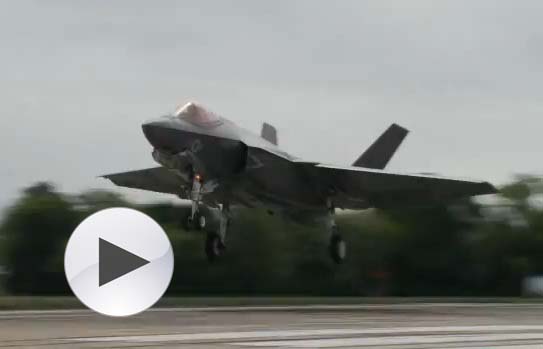New Software Improves F-35C Landings

Flying approaches for a carrier landing just might be a little easier in the future.
The F-35 Integrated Test Force at Naval Air Station Patuxent River completed the first dedicated test flight May 4 to evaluate the F-35C Lightning II Joint Strike Fighter’s approach handling characteristics with new flight control laws.
The new flight control software, called Integrated Direct Lift Control (IDLC), translates pilot commands into choreographed changes to engine power and control surface movement, greatly improving glide path control, according to Marine Corps Lt. Col. Matthew Taylor, an F-35 test pilot.
[youtube=http://www.youtube.com/watch?v=jlqRo3oBYZ8]
Precise glide path control is critical to landing safely on the carrier as a pilot concentrates on maintaining glide slope, angle of attack and lineup.
Pilots typically qualify to land on a carrier by completing around 30 landings while in initial flight training and at their fleet replacement squadrons. But with the new flight control software IDLC in the F-35, Taylor sees “the potential to reduce the training burden for new pilots going to the ship.”
The F-35C carrier variant of the Joint Strike Fighter is distinct from the F-35A and F-35B variants with its larger wing surfaces and reinforced landing gear to withstand catapult launches and deck landing impacts associated with the demanding aircraft carrier environment. The F-35C is undergoing test and evaluation at Pax River prior to delivery to the fleet.
Source: PEO(JSF) Public Affairs























